The Da Vinci RISE High model was designed to provide an equitable education for students traditionally left out of the larger educational narrative—those navigating foster care, housing instability, probation, and/or other circumstances that have interrupted their academic journeys. RISE believes that if we build with the needs of the most at-promise youth in mind, we will not only create an empowering school for them, but we will create a school that is well equipped to serve students with a vast array of skillsets and needs. The RISE model takes a responsive and holistic approach to education, acknowledging and adapting learning to accommodate the additional responsibilities and priorities students have in their lives outside of school. To do this, each RISE student co-creates and regularly updates a Personalized Learning Plan outlining their unique pathway to graduation. Plans leverage flexible scheduling, blended learning, mastery-based grading, and holistic wraparound support to ensure students meet their academic goals while managing their personal needs.
Da Vinci currently operates three RISE High schools serving 250 students in Los Angeles, California. Da Vinci Institute provides workshops to share model best practices. Da Vinci RISE: Student Profile Da Vinci RISE Brochure
What Makes This Model Innovative?
Whole-Child Focus
Anytime, Anywhere Learning
Customization
Goals
The Da Vinci RISE model is designed to provide equitable experiences and equitable outcomes for students most frequently written out of the larger educational narrative. RISE articulates the outcomes as a set of five tenets that comprise the Graduate Profile. Da Vinci RISE High Graduate Profile
Effective Communicator
An effective communicator is prepared to engage meaningfully in the world around them by listening actively, adapting to audience needs, speaking and writing clearly, resolving conflicts peacefully, and consuming print and digital media thoughtfully.
Tactful Collaborator
A tactful collaborator seeks out diverse teams, valuing members’ unique contributions (including their own) and participating fully by giving and receiving feedback and owning team outcomes.
Skilled Problem-Solver
A skilled problem-solver has the fundamental literacies necessary to analyze and evaluate academic information, points of view, and industry process; synthesize conclusions and justify their evidence; and apply acquired knowledge to the design and revision of projects.
Critical Thinker
A critical and original thinker asks questions and seeks evidence from multiple perspectives to understand and design solutions to complex problems.
Empowered Citizen
An empowered citizen is a lifelong learner and an engaged, responsible citizen who understands the power of their own identity while seeking to understand and honor those of others.
Experience
Students are at the center of the RISE model; all aspects of the school experience adapt and respond to individuals’ needs and goals as they evolve, making it possible for students to succeed academically while caring for their mental, physical, and social-emotional needs. To that end, the student experience involves instructional, behavioral, and holistic components. Da Vinci RISE Vision
- Instructional – Individualized learning plans rely on flexible scheduling, blended learning, mastery- and competency-based instruction, and real-world projects to make school relevant and feasible.
- Behavioral – Trauma-informed, restorative practices like community and advisory circles create a positive and inclusive environment that amplifies student voice and helps create trusting relationships among students and staff.
- Holistic – An in-house wraparound program helps students access and coordinate social service supports both inside and outside of school.
Every student’s academic journey is individually designed to meet their unique needs. Upon joining RISE, each student co-creates a Personalized Learning Plan (PLP) alongside school staff, family, and other important stakeholders. These plans articulate the student’s personal and professional goals and interests as well as an overview of the academic skills they are working to master and their plan for doing so. PLPs rely on the following systems and structures to truly individualize students’ academic pathways: Da Vinci RISE Curriculum
 Graduation pathways – RISE schools have three graduation pathways available that align to California regulations. Each pathway has slightly different credit requirements and end goals to align with students’ postsecondary plans (e.g., eligibility to attend state colleges and universities and preparation for community college or the workforce). Da Vinci RISE Graduation Pathways
Graduation pathways – RISE schools have three graduation pathways available that align to California regulations. Each pathway has slightly different credit requirements and end goals to align with students’ postsecondary plans (e.g., eligibility to attend state colleges and universities and preparation for community college or the workforce). Da Vinci RISE Graduation Pathways- Flexible schedules – School counselors collaborate with students and their parents/guardians to design a schedule that meets both their academic and personal needs. Students are required to attend class in person twice each week, although they are encouraged to attend as much as possible on scheduled school days.
 Blended learning – The flexible schedule at RISE schools is made possible through the use of blended learning. Students digitally access coursework through Google Classroom and Canvas to prepare for in-person instruction and project work time.
Blended learning – The flexible schedule at RISE schools is made possible through the use of blended learning. Students digitally access coursework through Google Classroom and Canvas to prepare for in-person instruction and project work time. - Project-based learning – Teachers use interdisciplinary projects to connect students’ learning to their interests, passions, and strengths. These projects allow students to demonstrate their progress toward mastering universal competencies that focus on process over product (e.g., analysis, problem-solving, and argumentation). Students present their learning at an annual school-wide exhibition each spring.
 Mastery- and competency-based instruction – Students are evaluated based on the knowledge and skills they demonstrate rather than time in class or work completion. They are given multiple opportunities to revise and strengthen their work after receiving feedback from their teacher. This system allows students to work at their own pace as they earn credits toward graduation. Da Vinci RISE Grading and Credits
Mastery- and competency-based instruction – Students are evaluated based on the knowledge and skills they demonstrate rather than time in class or work completion. They are given multiple opportunities to revise and strengthen their work after receiving feedback from their teacher. This system allows students to work at their own pace as they earn credits toward graduation. Da Vinci RISE Grading and Credits- Career readiness – Students engage in a variety of activities to expose them to postsecondary options and prepare them for life after graduation, including a mandatory World of Work course to learn how to create a resume, apply for a job, and interview; field experiences at local workplaces; and project-based learning aligned to actual careers.
The RISE model uses trauma-informed and restorative practices to create and foster caring relationships among staff and students, many of whom have experienced or are currently experiencing trauma. This includes both proactive/preventative practices and responsive practices. Da Vinci RISE Restorative Behavior Support Manual
The RAP (RISE Accountability Plan)
The RISE RAP is a five-level, trauma-informed behavior support system that encourages students to make appropriate decisions within and beyond school. Levels refer to day-to-day corrections; the protocol for major breaches (e.g., fighting, substances, bullying, weapons) results in more serious consequences and support plans.
Proactive Preventative Practices
 Community circles – Community circles take place roughly twice each week, giving students space to connect with the full school community and to raise and discuss school-wide issues and concerns.
Community circles – Community circles take place roughly twice each week, giving students space to connect with the full school community and to raise and discuss school-wide issues and concerns.- Advisory circles – Smaller advisory circles provide students with space to engage in personal reflection and receive peer-to-peer support and feedback.
- Focus on social-emotional skills – Through advisories and their classes, students pursue the 4Cs (care, connect, challenge, create) that comprise the RISE social-emotional framework, encouraging growth in how students relate to the self, others, and the world around them.
- School-wide positive behavior incentives – Students receive awards for exemplifying the RISE tenets (effective communicator, tactful collaborator, skilled problem-solver, critical thinker, and empowered citizen).
Responsive Practices
Negative behaviors are often manifestations of trauma. As such, the RISE model takes great care to respond in a trauma-informed and restorative manner. A breach in the behavioral expectations of the school community results in a collaboration between RISE administrators, behavior interventionists, counselors, and case managers, who determine appropriate restorative approaches to resolve conflict, repair harm, restore trust with others, and reintegrate with the community. These practices include, but are not limited to:
- Community circles
- Student mediation
- In-school reflection
- Leadership courses
Each RISE school has a Crisis Response Team that has been trained to respond to physical and emotional crises that occur on campus. Each team member is aware of the actions they must take in a crisis to ensure the safety and well-being of all community members. Da Vinci RISE Crisis Response Team Visual
In the RISE model, schools have both in-house wraparound services and external partnerships with community organizations to ensure students have support attending to the non-academic needs that are essential for them to be able to focus on learning.
 In-house wraparound services – Each RISE school has a team of mental health professionals including a school psychologist, a counselor, case managers, behavior interventionists, and a Coordinator of Student Support Services who serves on the leadership team and oversees the mental health practitioners. This team provides a wide range of resources, including but not limited to: mental health counseling, postsecondary planning support, case management, help navigating housing instability or the foster system, access to clothing and hygiene supplies, and connections to community organizations that provide meals, medical and dental care, and support for pregnant and parenting teens. The integration of these services within the fabric of RISE schools ensures that students never have to travel far to get what they need to be ready to learn.
In-house wraparound services – Each RISE school has a team of mental health professionals including a school psychologist, a counselor, case managers, behavior interventionists, and a Coordinator of Student Support Services who serves on the leadership team and oversees the mental health practitioners. This team provides a wide range of resources, including but not limited to: mental health counseling, postsecondary planning support, case management, help navigating housing instability or the foster system, access to clothing and hygiene supplies, and connections to community organizations that provide meals, medical and dental care, and support for pregnant and parenting teens. The integration of these services within the fabric of RISE schools ensures that students never have to travel far to get what they need to be ready to learn.- Co-location partnerships – RISE schools are co-located within community-based social service providers that assist with wraparound services and extracurriculars that build student confidence and empowerment. A Place Called Home Richstone Family Center New Earth
Supporting Structures
Da Vinci RISE is a comprehensive high school model. While some individual components of the overall student experience could be integrated into a more traditional school to offer additional flexibility and support to the students who need it most, much of the model’s success relies on the integration of all of its parts and the support of key resources and structures.
The RISE model relies on flexible and intentionally customized curriculum, instruction, and assessment structures.
One hallmark of the RISE model is its flexible design that adapts learning plans to meet students’ academic and personal needs. To do this, schools interested in implementing this model should prepare for the following:
Curriculum & Instruction – Design or adapt a curriculum so that it can be engaged with via a project-based, mastery-based, blended learning structure. This requires intentional planning so that each unit of study includes aligned pre- and post-assessments, a sequence of activities for students to complete independently online, and lessons/projects to be delivered in person.
Students participate in whole-group activities when they attend school in person twice each week. Whole-group activities are thematic and designed around general competencies, enabling students to practice together regardless of how they are progressing toward their individual goals.
Assessment – Assessments must be mastery-based, which requires articulating state and/or national content-specific standards so they can be measured using a four-point competency scale similar to the one below:
- 4 = “A” (Advanced Mastery)
- 3 = “B” (Proficient Mastery)
- 2 = “C” (Basic Mastery)
- 1 = “I” (Incomplete/insufficient work to assess mastery)
Schools should prepare to allow students to move at their own pace based on their demonstration of mastery. For instance, a student may request to complete an assessment before beginning a unit of study if they think they can master it; if they do, they can move on to the next unit.
Teachers must be prepared to provide robust feedback on student work and assessment so they understand how to move toward mastery. In this model, students are permitted to resubmit work and reassess as they work toward mastery.
The model relies on trauma-informed, restorative practices to foster a responsive community for students marginalized by traditional school systems.
A foundational belief at the core of the RISE model is the mindset that negative behaviors are often the manifestation of unresolved trauma. This belief guides the faithful school-wide implementation of trauma-informed and restorative practices that support students to build, foster, and restore their community when harm has been done. Restorative practices reduce the use of suspensions to manage behavior, instead targeting the root cause of the problem and promoting individual and community growth and well-being. Strong implementation of these practices requires the following:
- Aligned mindsets – Schools interested in the RISE model should interrogate the mindsets of their community around behavior management and “discipline” in advance of introducing restorative practices to identify those who may require strategic support to implement them with fidelity.
- Trauma awareness – Schools should also ensure community members learn about trauma, in particular its behavioral manifestations and their triggers, so they understand how to prevent and respond to negative outbursts or disengagement.
- School-wide proactive and reactive systems – Schools should be sure to plan for both proactive and reactive school-wide practices, as restorative justice works best when communities take consistent, intentional steps to build relationships before they have the need to restore them.
- Collaboration structures – School staff—which includes teachers, administrators, and a full Mental Health Team—work together to design and monitor a comprehensive support plan for each student. Staff also collaborate with people external to the school such as social service organizations and students’ families or guardians. Schools must nurture a “team” mindset and uphold it by creating sustainable collaboration systems.
In addition to traditional teaching and administrative staff, the RISE model employs a full Mental Health Team to provide holistic wraparound services.
Roles
Mental Health Team – The RISE model’s Mental Health Team works together to provide comprehensive care to students as they heal from trauma and overcome challenges impacting their education. The team includes a school psychologist, school counselor(s), and case managers as well as two additional roles described below:
- Coordinator of Student Support Services – The person in this role serves as a member of the school leadership team alongside the principal, overseeing outcomes related to social-emotional wellness and mental health.
- Behavior interventionists – There are no police at RISE schools. Instead, behavior interventionists trained in trauma-informed restorative practices offer students support when they are in crisis and/or have breached expectations. Behavior interventionists are integral members of the school community who help create a network of safety for all students.
Academic Team
 Interdisciplinary teachers – RISE hires STEM teachers and humanities teachers whose central responsibility is to build and help facilitate interdisciplinary projects. When students attend school twice per week, they generally work with these teachers.
Interdisciplinary teachers – RISE hires STEM teachers and humanities teachers whose central responsibility is to build and help facilitate interdisciplinary projects. When students attend school twice per week, they generally work with these teachers.- Academic coaches – Academic coaches provide students with ongoing academic support and help ensure students are on track to meet their individualized academic goals. If a student stops by a RISE campus on a day when they do not have class, they are likely to work with an academic coach.
Learning – All staff must be trained in trauma-informed care so they are prepared to support the safety, well-being, and social-emotional growth of students.
Flexible individualized schedules—with a reduced requirement for in-person learning compared to a traditional school—help meet student needs.
Knowing that students may have a number of responsibilities outside of school, the RISE model works with them to design personalized, flexible schedules so that nearly half of their learning is self-paced and online. Because RISE schools are chartered as independent study schools, students are never penalized for inadequate “seat time.”
In this model, students must attend in-person classes twice per week, but they can mix and match course schedules to meet this requirement. While they are only required to be in person twice per week, students are encouraged to come as much as possible during school hours Monday through Thursday from 9:00 a.m. until 3:00 p.m. Fridays are reserved for teacher planning and professional development.
To accommodate these flexible schedules, administrators and teachers must be thoughtful about when they will offer different in-person courses.
RISE schools follow a quarter system with ~9 weeks, followed by 1-2 weeks of break.
The RISE model relies on student support networks that are created and sustained by working closely with family and community stakeholders.
RISE schools work closely with parents/guardians, families, and stakeholders such as social workers, education attorneys, probation officers, advocates for children in foster care, and others to help build strong networks that will help students achieve the most success. These collaborations occur through ongoing case management and progress-monitoring meetings.
Additionally, the school partners with external service providers to offer students a range of services, including but not limited to:
- Career exploration
- Extracurricular activities
- Medical or dental care
- Teen pregnancy and parenting support
- Hygiene products and clothing
- Weekend meals
Those interested in implementing this model should research organizations that would be willing to provide these services to RISE students.
RISE as a diversion center – Diversion centers are alternative programs within the juvenile justice system to which children who commit nonviolent crimes can be redirected to avoid formal court proceedings. As a diversion center, RISE and New Earth actively combats the school-to-prison pipeline by intercepting youth from even touching the juvenile justice system, which increases youth’s likelihood of adult imprisonment by over 30%.
RISE schools benefit from proximity to the social service organizations with which they partner and a strategic physical design that accommodates both wraparound and academic support.
The three existing RISE schools are co-located with organizations that provide social support services, making access streamlined and simple. A Place Called Home Richstone Family Center New Earth
Each school accommodates ~100 students, and due to flexible scheduling, there are often no more than 25 students present at one time. In general, the space should include the following areas:
 A “Zen Zone,” which is a safe space for students to use if they are having a difficult day or need time to transition into school
A “Zen Zone,” which is a safe space for students to use if they are having a difficult day or need time to transition into school- 1-2 large spaces/classrooms for interdisciplinary project-based learning
- Comfortable spaces with charging stations for use by individual students working online or small groups working on projects
- Offices for use by administration and the Mental Health Team, including private spaces for 1:1 counseling and private meetings
All students must have 24-hour use of a personal laptop where they can access their individualized online coursework.
To accommodate the blended learning model, all RISE students must have their own laptops and WiFi hotspots or jet packs, allowing them to access their Personalized Learning Plans anywhere, any time.
RISE schools use Canvas, an online platform that allows students to access coursework digitally and from anywhere. Schools interested in implementing this model must commit to and become experts in this kind of learning management system.
On top of traditional school expenses, the RISE model allocates funds to co-location partnerships, transportation services, and an in-house Mental Health Team.
In addition to general school expenses, the RISE model allocates funds to the following crucial areas:
- Transportation – When getting to school is unsafe, unaffordable, or inaccessible, providing students with transportation can mean the difference between graduating and landing in the juvenile justice system. RISE allocates ~$300k each year for transportation services like HopSkipDrive, a service that provides young people rides to school with qualified, background-checked drivers.
- Co-location Partnerships – ~$400k is allocated for expenses related to co-location with social service organizations.
- Mental Health Team – RISE employs a full, in-house Mental Health Team to meet the ongoing needs of its students.
The RISE model relies on flexible and intentionally customized curriculum, instruction, and assessment structures.
One hallmark of the RISE model is its flexible design that adapts learning plans to meet students’ academic and personal needs. To do this, schools interested in implementing this model should prepare for the following:
Curriculum & Instruction – Design or adapt a curriculum so that it can be engaged with via a project-based, mastery-based, blended learning structure. This requires intentional planning so that each unit of study includes aligned pre- and post-assessments, a sequence of activities for students to complete independently online, and lessons/projects to be delivered in person.
Students participate in whole-group activities when they attend school in person twice each week. Whole-group activities are thematic and designed around general competencies, enabling students to practice together regardless of how they are progressing toward their individual goals.
Assessment – Assessments must be mastery-based, which requires articulating state and/or national content-specific standards so they can be measured using a four-point competency scale similar to the one below:
- 4 = “A” (Advanced Mastery)
- 3 = “B” (Proficient Mastery)
- 2 = “C” (Basic Mastery)
- 1 = “I” (Incomplete/insufficient work to assess mastery)
Schools should prepare to allow students to move at their own pace based on their demonstration of mastery. For instance, a student may request to complete an assessment before beginning a unit of study if they think they can master it; if they do, they can move on to the next unit.
Teachers must be prepared to provide robust feedback on student work and assessment so they understand how to move toward mastery. In this model, students are permitted to resubmit work and reassess as they work toward mastery.
The model relies on trauma-informed, restorative practices to foster a responsive community for students marginalized by traditional school systems.
A foundational belief at the core of the RISE model is the mindset that negative behaviors are often the manifestation of unresolved trauma. This belief guides the faithful school-wide implementation of trauma-informed and restorative practices that support students to build, foster, and restore their community when harm has been done. Restorative practices reduce the use of suspensions to manage behavior, instead targeting the root cause of the problem and promoting individual and community growth and well-being. Strong implementation of these practices requires the following:
- Aligned mindsets – Schools interested in the RISE model should interrogate the mindsets of their community around behavior management and “discipline” in advance of introducing restorative practices to identify those who may require strategic support to implement them with fidelity.
- Trauma awareness – Schools should also ensure community members learn about trauma, in particular its behavioral manifestations and their triggers, so they understand how to prevent and respond to negative outbursts or disengagement.
- School-wide proactive and reactive systems – Schools should be sure to plan for both proactive and reactive school-wide practices, as restorative justice works best when communities take consistent, intentional steps to build relationships before they have the need to restore them.
- Collaboration structures – School staff—which includes teachers, administrators, and a full Mental Health Team—work together to design and monitor a comprehensive support plan for each student. Staff also collaborate with people external to the school such as social service organizations and students’ families or guardians. Schools must nurture a “team” mindset and uphold it by creating sustainable collaboration systems.
In addition to traditional teaching and administrative staff, the RISE model employs a full Mental Health Team to provide holistic wraparound services.
Roles
Mental Health Team – The RISE model’s Mental Health Team works together to provide comprehensive care to students as they heal from trauma and overcome challenges impacting their education. The team includes a school psychologist, school counselor(s), and case managers as well as two additional roles described below:
- Coordinator of Student Support Services – The person in this role serves as a member of the school leadership team alongside the principal, overseeing outcomes related to social-emotional wellness and mental health.
- Behavior interventionists – There are no police at RISE schools. Instead, behavior interventionists trained in trauma-informed restorative practices offer students support when they are in crisis and/or have breached expectations. Behavior interventionists are integral members of the school community who help create a network of safety for all students.
Academic Team
 Interdisciplinary teachers – RISE hires STEM teachers and humanities teachers whose central responsibility is to build and help facilitate interdisciplinary projects. When students attend school twice per week, they generally work with these teachers.
Interdisciplinary teachers – RISE hires STEM teachers and humanities teachers whose central responsibility is to build and help facilitate interdisciplinary projects. When students attend school twice per week, they generally work with these teachers.- Academic coaches – Academic coaches provide students with ongoing academic support and help ensure students are on track to meet their individualized academic goals. If a student stops by a RISE campus on a day when they do not have class, they are likely to work with an academic coach.
Learning – All staff must be trained in trauma-informed care so they are prepared to support the safety, well-being, and social-emotional growth of students.
Flexible individualized schedules—with a reduced requirement for in-person learning compared to a traditional school—help meet student needs.
Knowing that students may have a number of responsibilities outside of school, the RISE model works with them to design personalized, flexible schedules so that nearly half of their learning is self-paced and online. Because RISE schools are chartered as independent study schools, students are never penalized for inadequate “seat time.”
In this model, students must attend in-person classes twice per week, but they can mix and match course schedules to meet this requirement. While they are only required to be in person twice per week, students are encouraged to come as much as possible during school hours Monday through Thursday from 9:00 a.m. until 3:00 p.m. Fridays are reserved for teacher planning and professional development.
To accommodate these flexible schedules, administrators and teachers must be thoughtful about when they will offer different in-person courses.
RISE schools follow a quarter system with ~9 weeks, followed by 1-2 weeks of break.
The RISE model relies on student support networks that are created and sustained by working closely with family and community stakeholders.
RISE schools work closely with parents/guardians, families, and stakeholders such as social workers, education attorneys, probation officers, advocates for children in foster care, and others to help build strong networks that will help students achieve the most success. These collaborations occur through ongoing case management and progress-monitoring meetings.
Additionally, the school partners with external service providers to offer students a range of services, including but not limited to:
- Career exploration
- Extracurricular activities
- Medical or dental care
- Teen pregnancy and parenting support
- Hygiene products and clothing
- Weekend meals
Those interested in implementing this model should research organizations that would be willing to provide these services to RISE students.
RISE as a diversion center – Diversion centers are alternative programs within the juvenile justice system to which children who commit nonviolent crimes can be redirected to avoid formal court proceedings. As a diversion center, RISE and New Earth actively combats the school-to-prison pipeline by intercepting youth from even touching the juvenile justice system, which increases youth’s likelihood of adult imprisonment by over 30%.
RISE schools benefit from proximity to the social service organizations with which they partner and a strategic physical design that accommodates both wraparound and academic support.
The three existing RISE schools are co-located with organizations that provide social support services, making access streamlined and simple. A Place Called Home Richstone Family Center New Earth
Each school accommodates ~100 students, and due to flexible scheduling, there are often no more than 25 students present at one time. In general, the space should include the following areas:
 A “Zen Zone,” which is a safe space for students to use if they are having a difficult day or need time to transition into school
A “Zen Zone,” which is a safe space for students to use if they are having a difficult day or need time to transition into school- 1-2 large spaces/classrooms for interdisciplinary project-based learning
- Comfortable spaces with charging stations for use by individual students working online or small groups working on projects
- Offices for use by administration and the Mental Health Team, including private spaces for 1:1 counseling and private meetings
All students must have 24-hour use of a personal laptop where they can access their individualized online coursework.
To accommodate the blended learning model, all RISE students must have their own laptops and WiFi hotspots or jet packs, allowing them to access their Personalized Learning Plans anywhere, any time.
RISE schools use Canvas, an online platform that allows students to access coursework digitally and from anywhere. Schools interested in implementing this model must commit to and become experts in this kind of learning management system.
On top of traditional school expenses, the RISE model allocates funds to co-location partnerships, transportation services, and an in-house Mental Health Team.
In addition to general school expenses, the RISE model allocates funds to the following crucial areas:
- Transportation – When getting to school is unsafe, unaffordable, or inaccessible, providing students with transportation can mean the difference between graduating and landing in the juvenile justice system. RISE allocates ~$300k each year for transportation services like HopSkipDrive, a service that provides young people rides to school with qualified, background-checked drivers.
- Co-location Partnerships – ~$400k is allocated for expenses related to co-location with social service organizations.
- Mental Health Team – RISE employs a full, in-house Mental Health Team to meet the ongoing needs of its students.
Supports Offered
Da Vinci offers the following support to help implement their approach.
Da Vinci Institute Multi-Day Conferences
Cost Associated
The Da Vinci Institute hosts an annual multi-day conference to provide hands-on learning experiences for teachers and leaders interested in learning practices that are universal to all Da Vinci schools (RISE included). Topics include project-based learning, restorative justice, behavior intervention as a way to combat the school-to-prison pipeline, trauma-informed care, and mastery-based grading.
Da Vinci Institute Workshops
Cost Associated
The Da Vinci Institute also hosts half- or full-day best practice workshops to train school leaders and educators on Da Vinci’s best practices and to provide teachers from across the country with space and time to collaborate with other practitioners.
Reach
Impact
RISE has an outstanding record of success for disrupting systemic cycles and failures.
Of the 108 RISE alumni to date, 15% were in foster care, 7% were homeless, 8% were on probation, and 10% were involved in more than one system. A few of their successes are below:
- 90% of foster and homeless students return to RISE each year.
- Though many students enter RISE with credit deficiencies, 66% graduate within 3 years.
- During the 2021-22 school year, 61% of students showed improvement in credits earned from quarter one to quarter four.
- Many students enter RISE as “seniors” but with extended disruptions to their education, making them overage and under-credited. During the 2021-22 school year, 60% of these students graduated within the year.


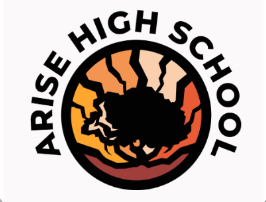

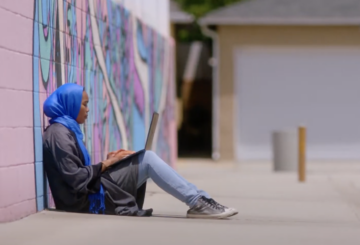 Blended learning
Blended learning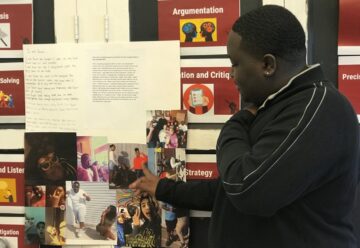 Mastery- and competency-based instruction
Mastery- and competency-based instruction 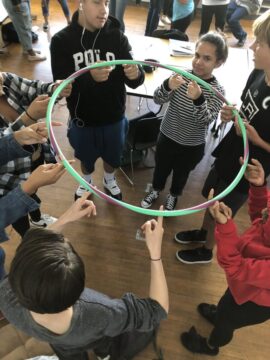 Community circles
Community circles  In-house wraparound services
In-house wraparound services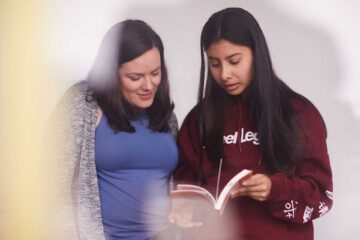 Interdisciplinary teachers
Interdisciplinary teachers 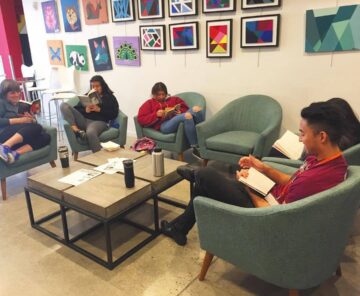 A “Zen Zone,” which is a safe space for students to use if they are having a difficult day or need time to transition into school
A “Zen Zone,” which is a safe space for students to use if they are having a difficult day or need time to transition into school